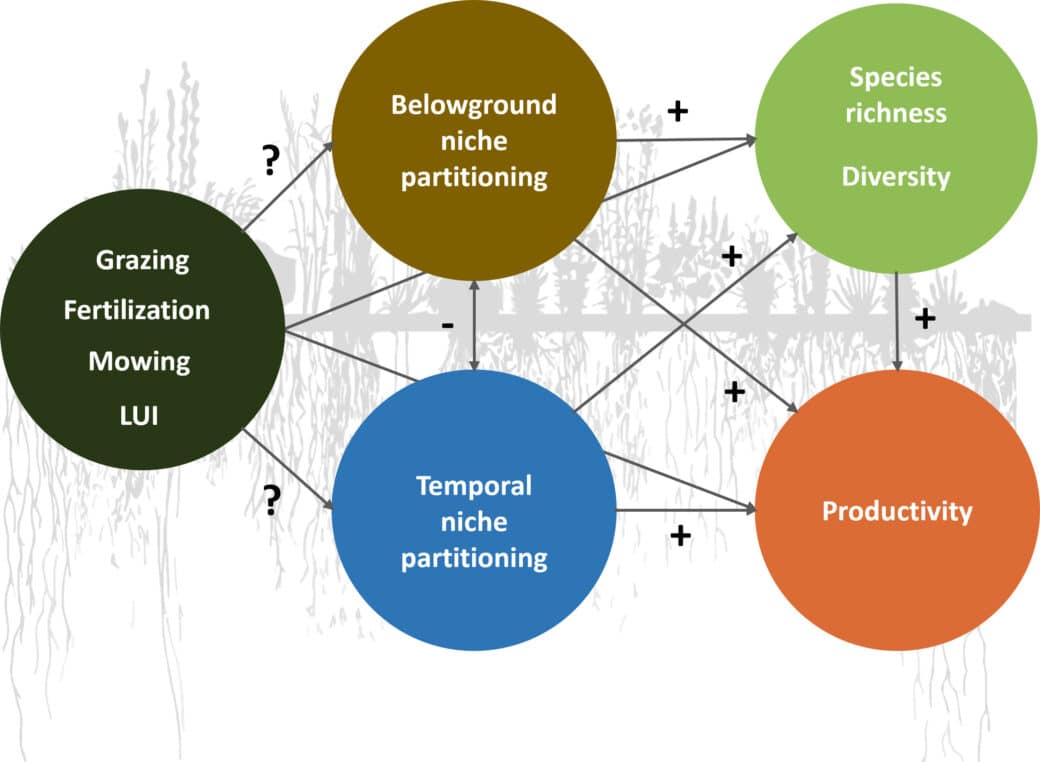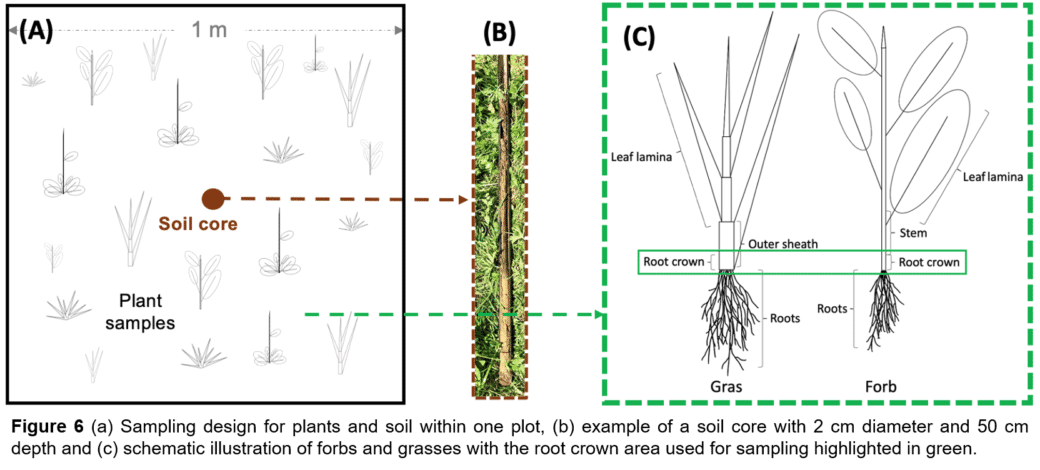Belowground and temporal niche partitioning along land-use gradients in grasslands

Niche partitioning is recognized as a key mechanism by which coexistence is maintained by plant species utilizing different niches to partition resources, leading to the avoidance of competitive exclusion. However, the precise mechanisms underlying plant species’ coexistence and the maintenance of biological diversity are still one of the fundamental, yet most debated questions in both basic and applied ecology, with several important knowledge gaps to be addressed. Moreover, though recognized in theory, the empirical support for the niche partitioning under field conditions is scarce, especially in plant communities dominated by similar life forms such as grasslands.
The first important knowledge gap that remains open is the relative importance of the spatial and the temporal components of niche partitioning for the maintenance of species’ coexistence and diversity. The second is to what extent and in which direction the niche partitioning varies along gradients of resource availability, stress, and disturbance. Biodiversity Exploratories present a unique opportunity to fill both of the aforementioned knowledge gaps through a well-replicated, long-term, integrative experimental design along pronounced land-use gradients.
WP 1 Belowground niche partitioning
- Quantify belowground niche partitioning by determining the plant’s water-uptake depths using the stable oxygen isotope approach in a well-replicated experimental design of the 150 grassland EPs.
WP 2 Temporal niche partitioning
- Quantify temporal niche partitioning by relating the existing long-term temporal data on year-to-year variability in species abundances (in the 150 grassland EPs) with underlying plant strategies defined by relevant functional traits.
WP 3 The extent of niche partitioning along land-use gradients
- Determine the relative importance of the spatial and temporal mechanisms of niche partitioning for the diversity and productivity of the grassland ecosystems.
- Assess how these mechanisms change along gradients of resource availability, stress, and disturbance determined by differences in land-use management.
Water-uptake depths using oxygen stable isotopes
To explore belowground niche partitioning occurring in the vertical soil profile, stable isotopes of oxygen at natural abundance enable to discriminate accurately from which depth plants take up water. In short, during periods without any precipitation events (i.e., naturally occurring periods without precipitation within the vegetation season), upper soil layers become gradually drier, and thus the soil water becomes enriched in the heavier isotope (18O) due to faster evaporation of the lighter 16O. This process is called fractionation into heavier and lighter isotopes and results in a natural vertical gradient of unique water isotopic signatures in the soil profile. During water uptake and transport in roots and plant tissues with no photosynthetic activity (i.e., root crown for herbaceous plants), no further fractionation of water isotopes occurs. Hence, the isotopic signature of the water within the plant’s xylem sap reflects with its isotope ratio the source, i.e., the depth from which the plant has extracted water.
We will quantify the isotopic signature in different soil depths and match it with the isotopic signature of ~10 most abundant plant species. We will use cryodistillation to extract water from soil and plant samples and use an isotope-ratio mass spectrometer (IRMS) to analyze the isotopic ratio.










